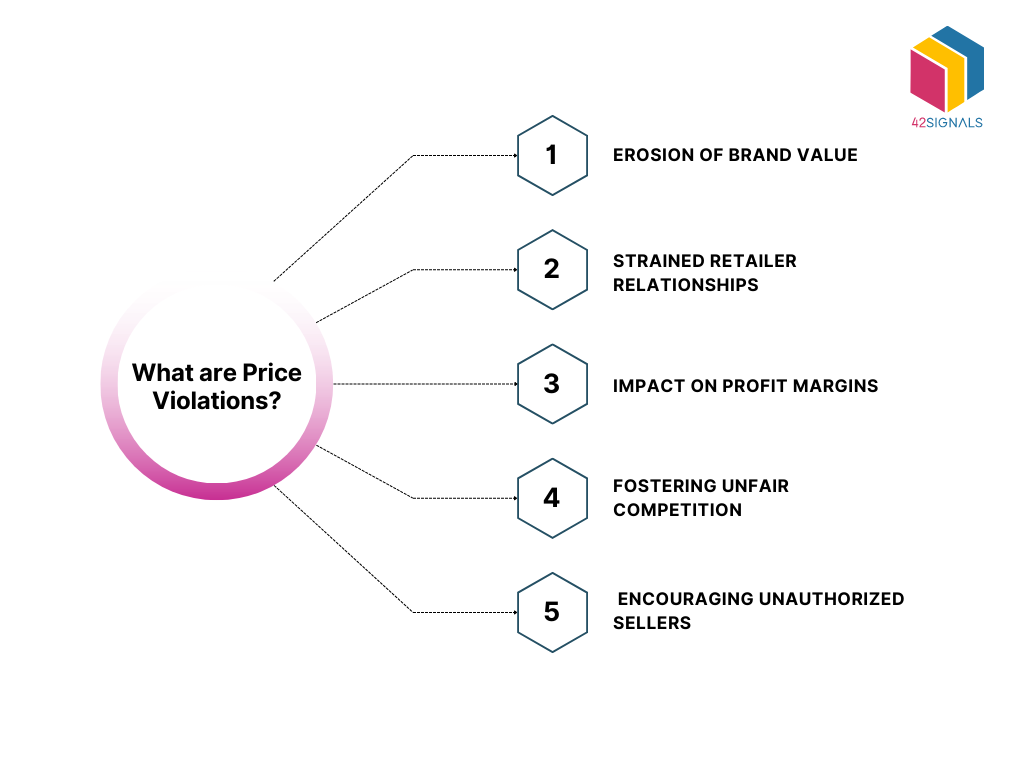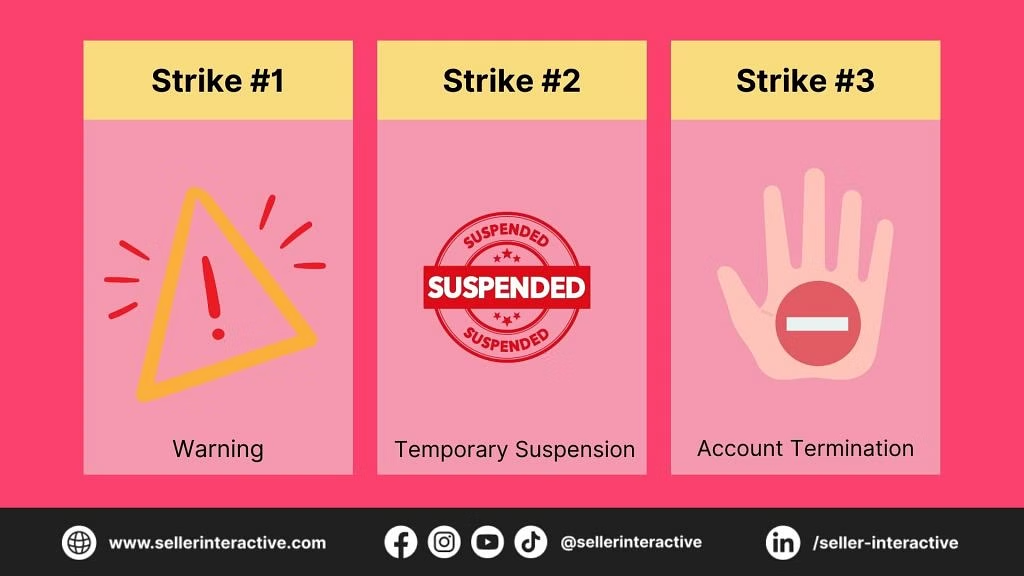Companies today often sell their products through various channels to reach as many customers as possible. These channels can include direct sales, online marketplaces, authorized retailers, and more. However, when multiple distribution channels are used, there is always the risk of channel conflict arising from price discrepancies between these channels.
This issue, known as retailer price violations, can lead to damaged relationships with partners, loss of revenue, and decreased brand value. Therefore, businesses must manage violations effectively to prevent channel conflicts.

Image Source: Priceva
What are Retailer Price Violations Causing Channel Conflict?
Retailer price violations occur when a retailer sets a product price below the minimum advertised price (MAP) established by the manufacturer or seller. MAP policies aim to protect the integrity of a brand and ensure fair competition among all retailers selling the same product.
When one retailer undercuts others by advertising lower prices, it creates an uneven playing field and disrupts the balance in the marketplace. Additionally, consumers may start seeking out the lowest-priced option regardless of where they purchase, further exacerbating the problem.

Image Source: Price2Spy
To prevent such issues and channel conflict, businesses must establish clear guidelines and expectations regarding pricing strategies. Communicating openly with retailers about MAP policies, potential noncompliance consequences, and monitoring adherence methods is essential. By fostering strong partnerships based on transparency and mutual respect, brands can create an environment conducive to long-term success.

Ways of Monitoring Retailer Price Violations
One effective way to monitor retailer compliance is through automated tools that track online listings alert manufacturers to any deviations from set pricing standards and avoid channel conflicts.
Tools like 42Signals’ MAP Violations and Seller Intelligence offer real-time insights into how products are being priced across different platforms, allowing businesses to take swift action against those who violate MAP agreements.
Regular audits of retailer websites and marketplaces should also be conducted manually to verify the accuracy and consistency of pricing practices.
When dealing with retailer price violations, communication is key. Rather than immediately resorting to legal measures or terminating partnerships, consider engaging in constructive dialogue with the offending party.
Acknowledge their efforts to provide competitive pricing while emphasizing the importance of maintaining a level playing field for all involved parties. Offer resources and support to help them comply with MAP policies moving forward, demonstrating your commitment to building lasting relationships grounded in trust and collaboration.
Preventing Channel Conflict
Another strategy for preventing channel conflict caused by retailer price violations involves implementing tiered pricing structures tailored to each distributor’s unique needs and capabilities.
By offering varying levels of discounts based on factors such as volume purchases, exclusive territories, or marketing initiatives, businesses can incentivize retailers to maintain appropriate pricing without compromising profitability.
Furthermore, providing access to co-op funds, promotional materials, and training programs can empower retailers to effectively market and sell products at suggested retail prices, thereby reducing the likelihood of price erosion.
In addition to proactive measures aimed at preventing violations, businesses should develop contingency plans for addressing instances of noncompliance and channel conflicts.

Image Source: Seller Interactive
Establishing clear consequences for repeated infractions, such as –
- Suspending shipments
- Revoking special privileges or
- Pursuing legal action
sends a strong message that MAP policies will be enforced consistently.
At the same time, remain open to renegotiating terms if circumstances change or exceptional circumstances arise, ensuring that decisions are made fairly and reasonably.
Lastly, educate both internal teams and external partners on the importance of protecting brand value and promoting healthy competition within the marketplace. Encourage employees to report suspicious activity and engage in regular discussions about best practices for managing pricing disputes.
Provide retailers with resources and guidance on optimal pricing strategies, highlighting the benefits of adhering to MAP policies and the negative impacts associated with violations. Through collective efforts, businesses can foster a culture centered around ethical conduct, mutual respect, and collaborative growth.
Let’s look at a few examples of companies that faced and overcame price violations.
GoPro
GoPro, a leading manufacturer of action cameras, faced significant challenges due to widespread MAP policy violations on Amazon. To address this channel conflict issue, GoPro decided to stop selling its products directly to Amazon and instead appointed a select group of authorized resellers responsible for fulfilling orders placed on the platform.
This move allowed GoPro to regain control over its pricing strategy and minimize conflicts between competing sellers. As a result, average selling prices increased significantly, helping to preserve the brand’s premium image and improve overall profitability.
Yeti Coolers
Yeti Coolers, renowned for their high-quality coolers and drinkware, experienced similar problems with MAP policy violations on Amazon. The company took several steps to rectify the situation, including identifying and removing unauthorized sellers, limiting distribution channels, and increasing enforcement of MAP policies.
By strengthening relationships with authorized dealers and providing them with additional support, Yeti restored order to its distribution network and maintained consistent pricing across all channels, avoiding channel conflict.
Sonos
Sonos, a producer of wireless home sound systems, encountered difficulties when third-party sellers began listing its products on eBay at steep discounts. In response, Sonos developed a comprehensive plan to combat MAP violations, which included working closely with authorized retailers, improving communication channels, and utilizing specialized software to monitor pricing trends.
By engaging in open dialogues with offending sellers and imposing penalties for continued noncompliance, Sonos was able to reduce the prevalence of price erosion and protect its brand value.
Conclusion on Preventing Channel Conflict
Preventing conflict resulting from retailer price violations requires ongoing vigilance, clear communication, and strategic planning.
Taking decisive action when necessary can help businesses resolve such issues that dilute brand reputation.
While doing it manually can be cumbersome, 42Signals provides comprehensive MAP violations and seller intelligence data that help brands across marketplaces identify, take action, and resolve unlawful violations.
If you are curious to know more about our product schedule a demo or sign up for a free trial.




